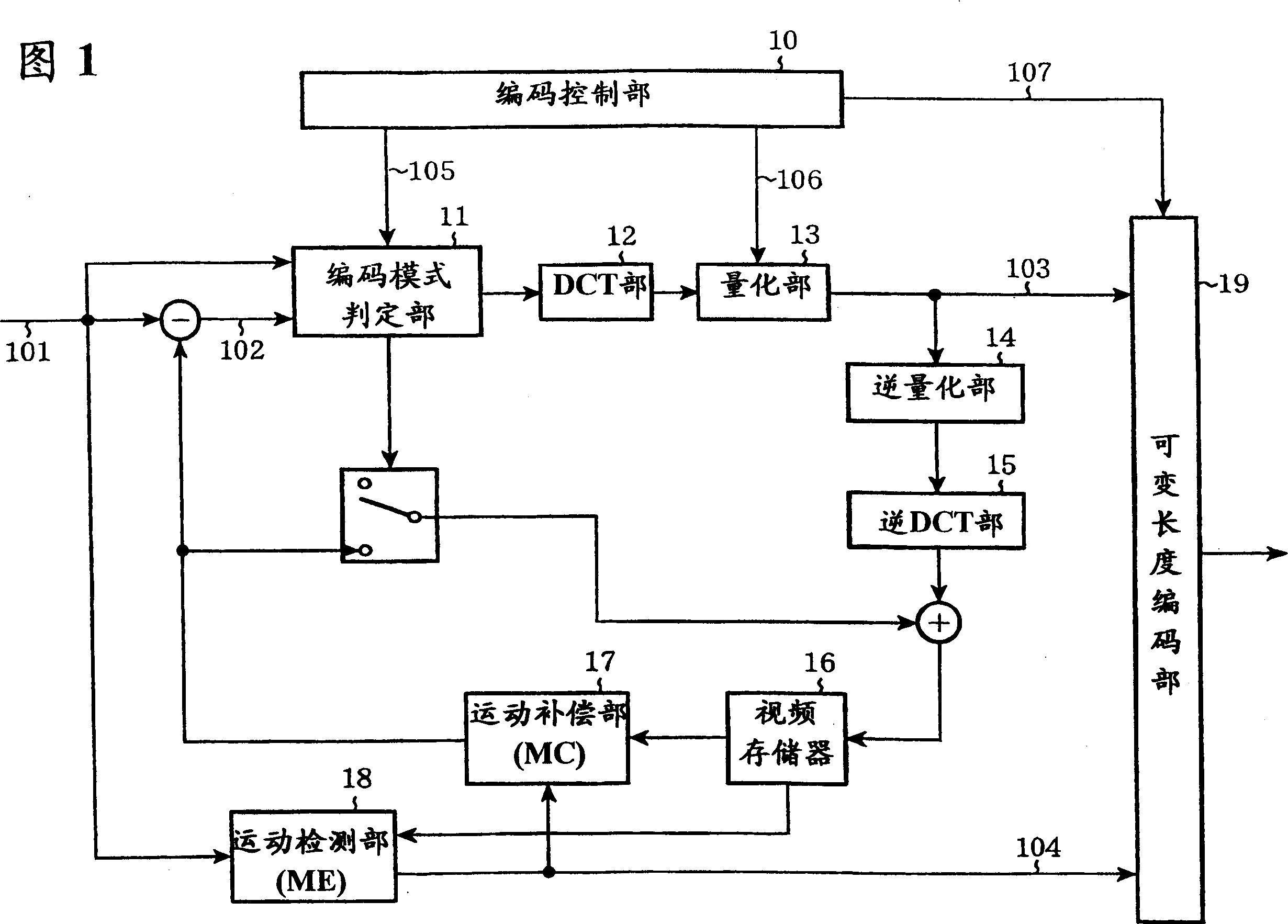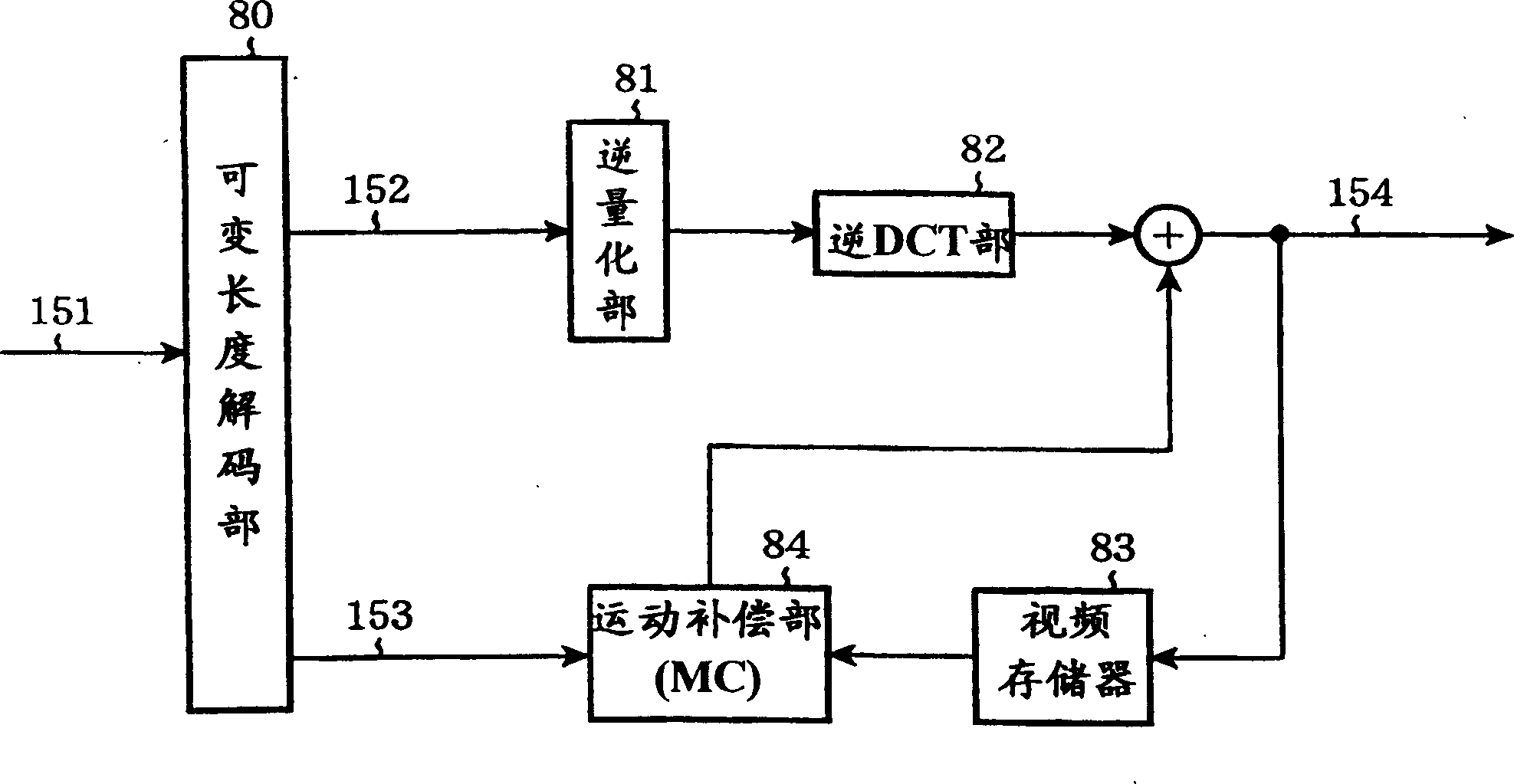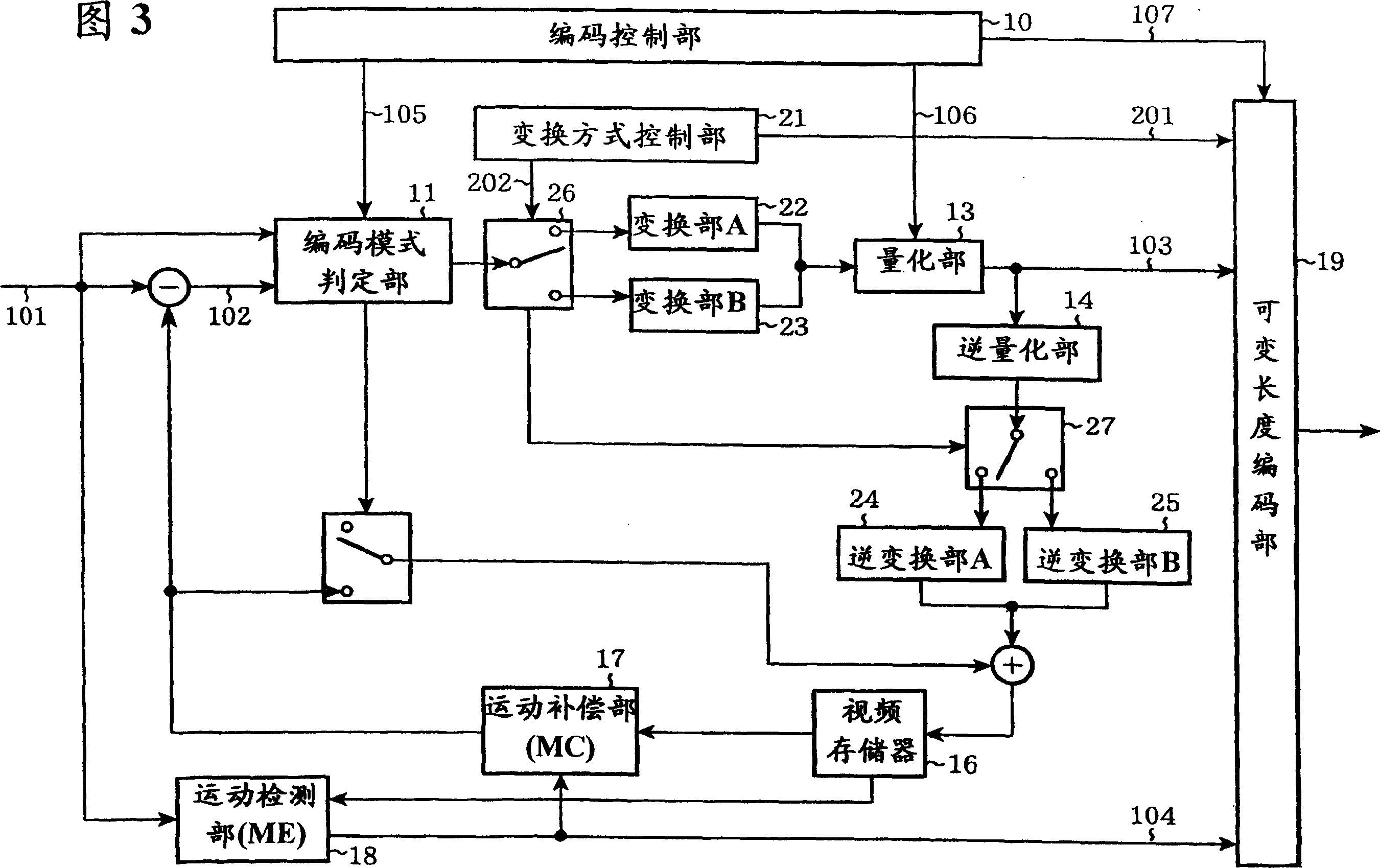Moving picture coding apparatus and moving picture decoding apparatus
A moving image and decoding device technology, applied in image coding, code conversion, image communication, etc., can solve problems such as inability to obtain compression characteristics, impossibility of encoding error lossless encoding processing, etc.
- Summary
- Abstract
- Description
- Claims
- Application Information
AI Technical Summary
Problems solved by technology
Method used
Image
Examples
Embodiment 1
[0056] Fig. 3 is a block diagram of an image coding apparatus according to Embodiment 1 of the present invention.
[0057] In the figure, 21 is a conversion mode control unit, 22 is a first conversion unit A, 23 is a second conversion unit B, 24 is a first inverse conversion unit A, 25 is a second inverse conversion unit B, 26, 27 are switches, It is used to select one of the two transformation units A 22 , B 23 and inverse transformation units A 24 , B 25 . Other constituent elements are the same as those of the conventional example shown in FIG. 1 , and modules with the same numbers have the same functions and perform the same operations.
[0058] Next, the operation will be described. As a process of converting the signal output by the encoding mode determination unit 11 from the spatial domain to the frequency domain, the conversion method control unit 21 uses the signal 202 to control the switch 26 to select from the two prepared conversion units A 22 and B 23. One to p...
Embodiment 2
[0067] Fig. 4 is a block diagram showing the structure of an image coding apparatus according to Embodiment 2 of the present invention. In the figure, the transform method control unit 31 is different from the first embodiment in that it operates according to a signal from the encoding control unit 30 . Therefore, it is characterized in that the operation of transmitting the conversion method selection flag 201 to the decoding device side necessary in the first embodiment becomes unnecessary, or the number of times of transmission can be reduced.
[0068] Next, the operations of the encoding control unit 30 and the conversion scheme control unit 31 in the second embodiment will be described in detail. The conversion method control unit 31 executes the switching operation of the switches 26 and 27 based on the signal 203 from the encoding control unit 30 . As a method for the conversion method control unit 31 to perform operation control based on the signal 203 from the encodi...
Embodiment 3
[0083] Fig. 5 is a block diagram showing the structure of an image coding apparatus according to Embodiment 3 of the present invention. In the figure, except that an encoding control unit 40, two different quantization units 42, 43, two different inverse quantization units 44, 45 are provided, and the switch 27 is deleted, it is the same as the first embodiment shown in FIG. 3 .
[0084] Next, the operation will be described. For example, when the switch 26 selects the first transform unit A22 based on the signal 202 from the transform method control unit 21, the signal converted by the transform method of the first transform unit A22 is quantized according to the transform method. That is, it is quantized in the quantization unit A 42 having a quantization characteristic that can improve coding efficiency, and then output to the variable-length coding unit 19 as a quantization coefficient 211 for coding. Simultaneously, this quantized coefficient 211 is inversely quantized i...
PUM
 Login to View More
Login to View More Abstract
Description
Claims
Application Information
 Login to View More
Login to View More - R&D
- Intellectual Property
- Life Sciences
- Materials
- Tech Scout
- Unparalleled Data Quality
- Higher Quality Content
- 60% Fewer Hallucinations
Browse by: Latest US Patents, China's latest patents, Technical Efficacy Thesaurus, Application Domain, Technology Topic, Popular Technical Reports.
© 2025 PatSnap. All rights reserved.Legal|Privacy policy|Modern Slavery Act Transparency Statement|Sitemap|About US| Contact US: help@patsnap.com



